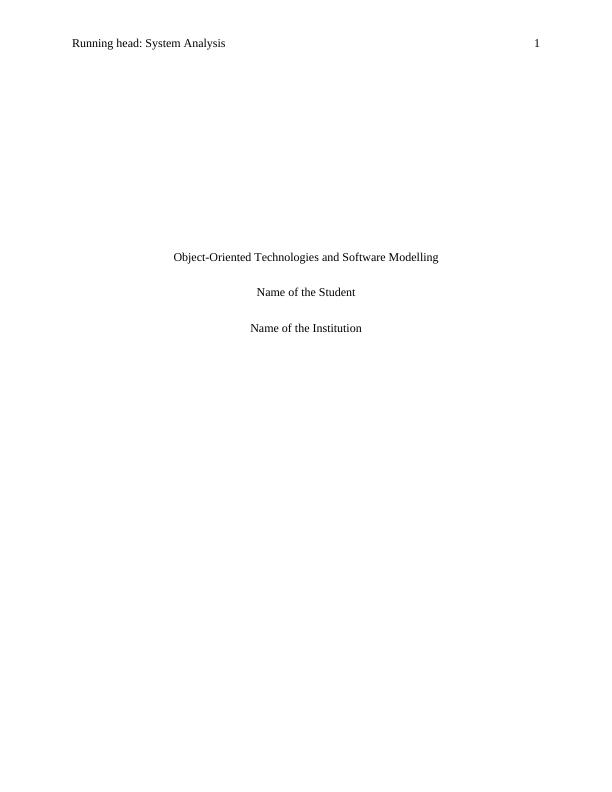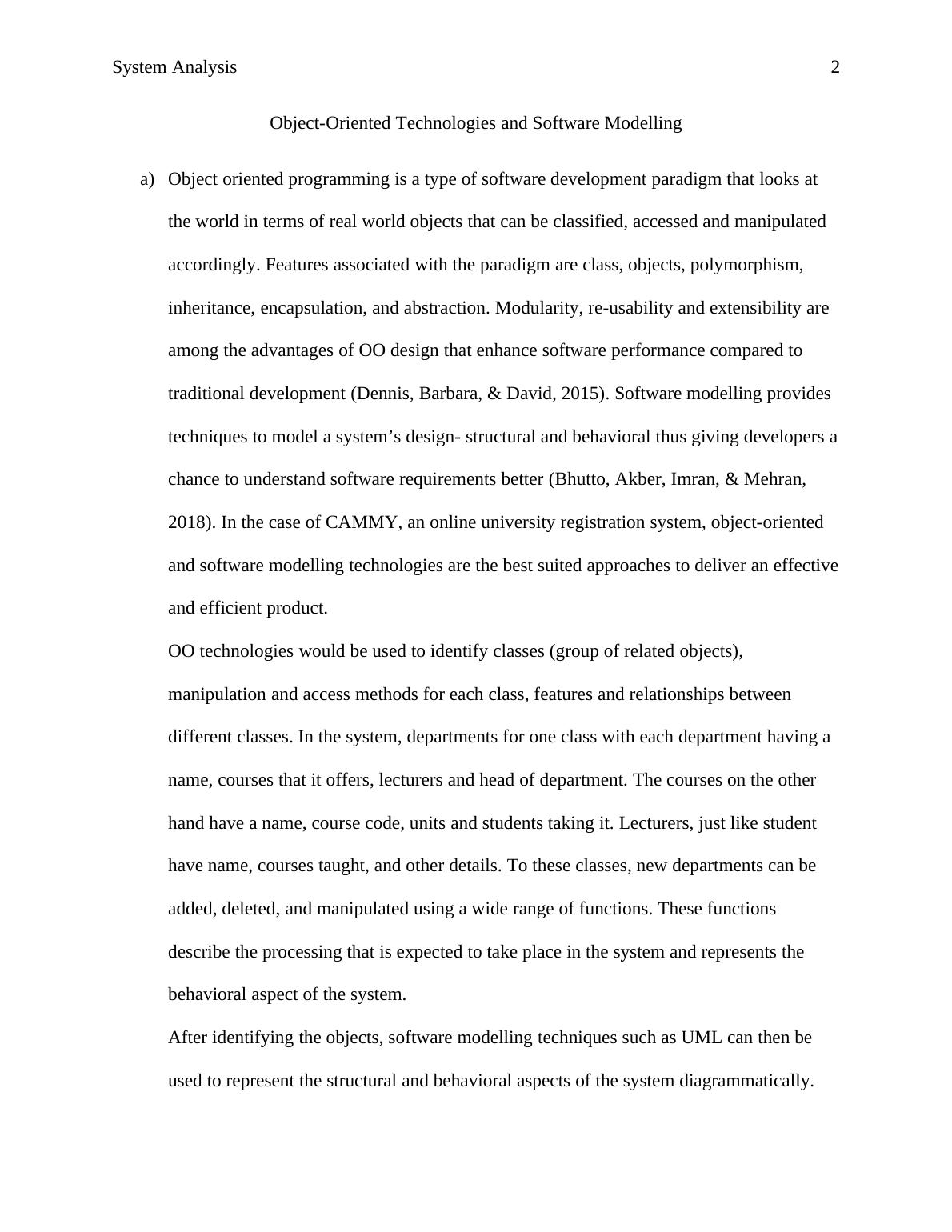Object-Oriented Technologies and Software Modelling
Develop an online university registration system using object-oriented technologies and software modelling. Apply UML to develop use case and specifications for the system.
5 Pages544 Words211 Views
Added on 2022-10-10
About This Document
This document explains the advantages of Object-Oriented Technologies and Software Modelling. It describes the features of OO design and software modelling techniques. It also provides an example of how these technologies can be used in the CAMMY online university registration system.
Object-Oriented Technologies and Software Modelling
Develop an online university registration system using object-oriented technologies and software modelling. Apply UML to develop use case and specifications for the system.
Added on 2022-10-10
ShareRelated Documents
End of preview
Want to access all the pages? Upload your documents or become a member.
Importance of UML in Object Oriented Software Projects
|9
|1965
|256
System Analysis and Design Solution Template
|5
|1847
|149
Database. System Analysis Design and Architecture Name
|5
|461
|84
SYSTEM ANALYSIS AND DESIGN.
|5
|495
|38
Unit 20 Advanced Programming - Assignment
|31
|3536
|337
System Analysis and Design Solution Template
|4
|1502
|307


